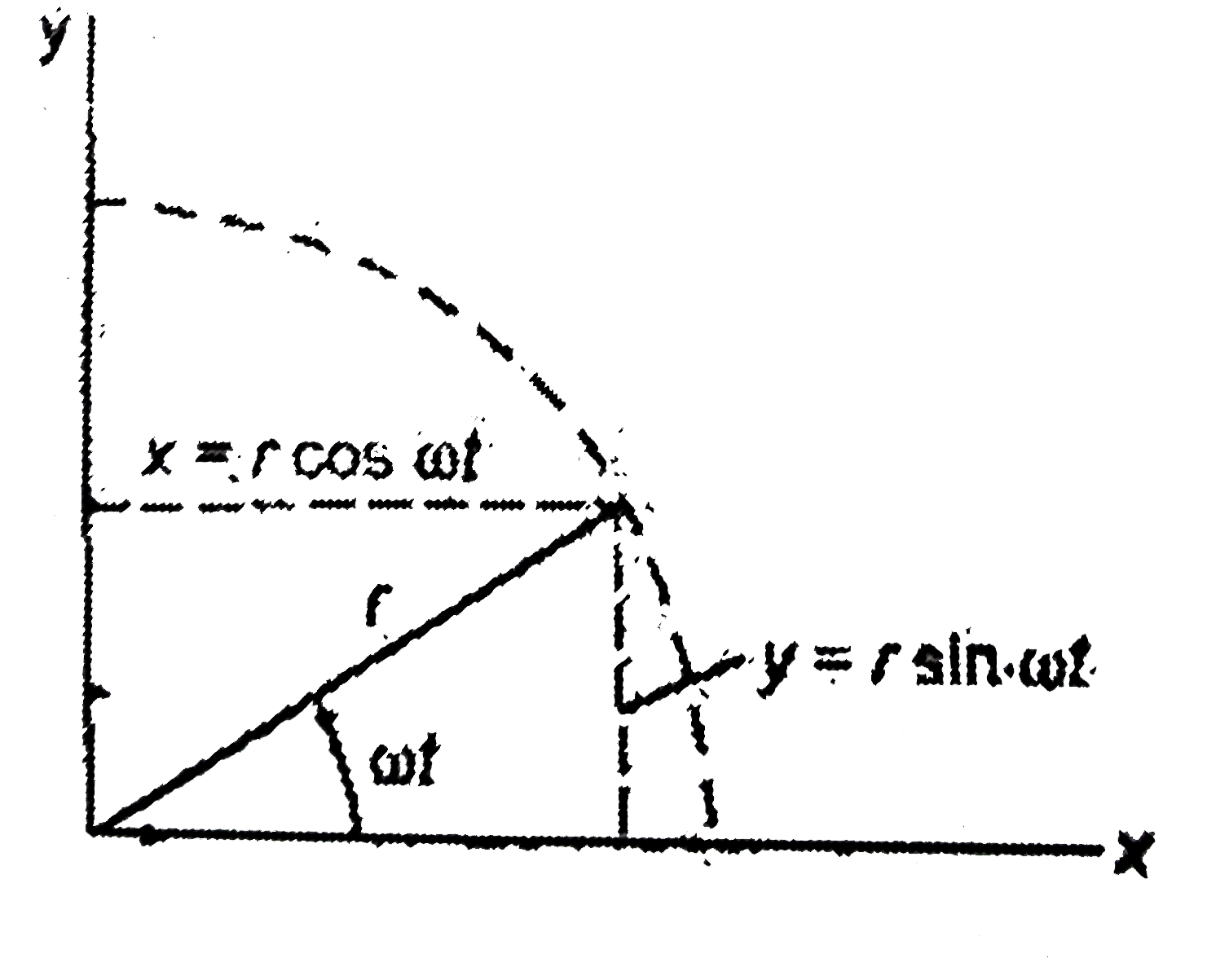Consider a particle moving in the x−y plane according to r=r(cosωtˆi+sinωtˆj), where r and ω are constants. Find the trajectory, the velocity, and the acceleration.

Step by step video & image solution for Consider a particle moving in the x-y plane according to r=r (cos omegat hat(i)+sin omega t hat(j)), where r and omega are constants. Find the trajectory, the velocity, and the acceleration. by Physics experts to help you in doubts & scoring excellent marks in Class 11 exams.
Updated on:21/07/2023Topper's Solved these Questions
- FORCE ANALYSISBOOK - ANURAG MISHRACHAPTER - FORCE ANALYSISEXERCISE - Example
95 Videos
- FORCE ANALYSISBOOK - ANURAG MISHRACHAPTER - FORCE ANALYSISEXERCISE - level 1
103 Videos
- DESCRIPTION OF MOTIONBOOK - ANURAG MISHRACHAPTER - DESCRIPTION OF MOTIONEXERCISE - Level-3
34 Videos
- IMPULSE AND MOMENTUMBOOK - ANURAG MISHRACHAPTER - IMPULSE AND MOMENTUMEXERCISE - matching
3 Videos
Similar Questions
A point moves in the plane xy according to the law x=asinωt,y=bcosωt, where a,b and ω are positive constants.
Find :
(a) the trajectory equation y(x) of the point and the direction of its motion along this trajectory ,
(b) the acceleration w of the point as a function of its radius vector r relative to the orgin of coordinates.
View SolutionThe position vector of a particle is given by →r=kcosωˆi+ksinωˆj=xˆi+yˆj, where k and ω are constants and t time. Find the angle between the position vector and the velocity vector. Also determine the trajectory of the particle.
View Solution
Knowledge Check
A particle moves in xy plane according to the law x = a sin ωtand y = a(1 – cosωt) where a and ω are constants. The particle traces
Aa parabolaBa straight line equallyinclined to x and y axesCa circleDa distance proportional to timePosition vector of a particle moving in x−y plane at time t is r=a(1−cosωt)ˆi+asinωtˆj. The path of the particle is
Aa circle of radius a and centre and (a,0)Ba circle of radius a and centre at (0,0)Can ellipseDNeither a circle nor an ellipseA particle moves in the xy-plane according to the law x=asin(ωt)andy=a(1−cosωt) where 'a' and 'omega' are constants. Then the particle. follows :
Aa parabolic pathBa straight line path, equally inclined to x- and y-axisCcircular pathDa path such that distance moved by it is proportional to time
A point moves in the plane xy according to the law x=asinωt, y=a(1−cosωt), where a and ω are positive constants. Find:
(a) the distance s traversed by the point during the time τ,
(b) the angle between the point's velocity and acceleration vectors.
View SolutionConsider a particle moving in the x−y plane according to r=r(cosωtˆi+sinωtˆj), where r and ω are constants. Find the trajectory, the velocity, and the acceleration.

View SolutionA particle moves so that its position vector is given by →r=cosωtˆx+sinωtˆy, where ω is a constant which of the following is true ?
View SolutionFor a particle moving in the x-y plane, the x and y coordinates are changing as x=a sin ωt and y=a(1−cosωt), where 'a' and ω constants. Then, what can be inferred for the trajectory of the particle ?
View SolutionA particle moves in x-y plane according to the equation ¯r=(ˆi+2ˆj)Acosωt the motion of the particle is
View Solution